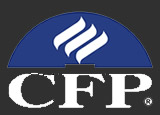As we turn the page from February to March, we can breathe a little easier about the passing of another winter. March has one foot in winter and one in spring, and here in Maryland, we have had some of our worst blizzards in March. So it’s not over yet—but close. (The official first day of Spring is Sunday, March 20.)
March also brings us one month closer to the income tax deadline. So a couple of things—if you’re going to make that last-minute IRA contribution for 2021, you need to get that check to us before you submit your IRS forms. Same with a 2021 Roth contribution. Roth IRAs do not save any current income tax, but they never generate a tax bill in the future—for you or your heirs.
As if your tax season was not frustrating enough, we’re still waiting to finalize a few 1099Div(s) from Pershing. (Pershing holds most of our brokerage accounts.) It’s not Pershing that is the problem; a few investments funds/ETFs are tardy in classifying their income and dividends. We expect them out any minute, and I’ve got a list of those who are waiting. I routinely check for these every morning.
Now, on to the main reason for this newsletter. The lousy start of the year for the markets. We are in a good old-fashioned market correction. We last wrote about market corrections in our August 21 newsletter—see here: http://www.chesadvisors.com/email-newsletter-35-08-29-2021/#more-346. Let’s face it; nobody likes a correction while we’re one of them. Intellectually we know that corrections are where big money is made, but we can only see this when they are over. Well, my friends, we’re in one now, and true enough, it doesn’t feel good. Over the next few years, though—we will look back on these few months (like we do about March 2020) and see what good bargains we were offered.
We don’t know everything, but we know this—corrections are temporary. History tells us that markets are linear lines progressing from the lower left to the upper right. For example, ten years ago, the S&P 500 closed out February at 1,378.[i] This year we closed out February at 4,373. As a country and as a globe, we have been through a lot in ten years. And still, the S&P 500 more than tripled.
We know investing is a long-term project. We also acknowledge that nobody knows what the rest of 2022 will bring—at best, it is a total guess by most financial pundits. However, one Economist I have found worth reading, Brian S. Wesbury (and his Deputy Robert Stein), predict the S&P 500 will close this year around 5,250. He also believes the Dow will make it to 40,000. Now I’m sure he would be the first to admit that it is a throw of the dice, but his 2021 prediction was impressively close.
In November 2020, his model (Capitalized Profits Model) predicted the S&P 500 average at the end of 2021 to be 4,200. Then, in April 2021, he updated his prediction to 4,500. People thought it was way too optimistic. The index closed CY2021 at 4,766.18. So, while his 5,250 end of 2022 call seems high now, we know that Brian’s model is not overly optimistic. Here’s a link to his reasoning: https://www.ftportfolios.com/Commentary/EconomicResearch/2022/2/22/sticking-to-our-targets,-for-now.
When people ask if I think it’s time to sell and go to cash—my response today is the same as it was in the middle of March 2020—no! We hold on to what we have and buy if we can. We’ve mentioned it before, and it always bears repeating, the average annual drawdown per year since 1980 has been 14%. And still, the markets were positive 32 out of those 42 years–even ignoring the dividends. Our partner advisor Kristen Owen at Chesapeake Bank and Trust, wrote her February 15th newsletter on this very subject. Here: https://mailchi.mp/3ff4848d3261/february2022-5119961
During those 42 years, the average annual compound rate of return from January 1980 to the end of December 2021 was 12%. Corrections are commonplace, as in, almost every year we have one. They say investing is easy: buy low, sell high, right? Well, the start of 2022 is more than likely that aforementioned low, or at least close to it.
Lastly, let’s close with a little math trick. It has been around forever, but maybe you’ve not heard it lately. It’s called the Rule of 72[ii]. The Rule of 72 is a quick mental calculation of how many years it takes to double something in value. Simply divide the number 72 by the average rate of return/or change. So if you are earning 4% growth per year, it would take about 18 years for that investment to double (72/4 = 18). If we can get 10%, that would take 7.2 years (72/10 = 7.2). For perspective, search your favorite search engine for “Best CD rates in February 2022.” It should return something like 0.90% for a one-year Certificate of Deposit. Our formula, 72 divided by 0.90 = 80. That’s right–eighty years–eighty years to double your investment at 0.90%. As in the year 2102. And who knows what problems we will have then. Perhaps Y2.1K! I’ll be sitting here at the desk as the first 140-year-old investment advisor.
Thanks for reading. Keep your heads up–have a great week, and please give us a call if you have any last-minute tax questions. Or, if you want a little reassurance, give me a call, and we’ll go over things. MK
[i] https://www.investing.com/indices/us-spx-500-historical-data
[ii] https://www.investopedia.com/terms/r/ruleof72.asp


